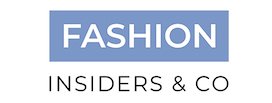Counterfeiting is a specific term in intellectual property, referring to any infringement or unauthorised use of an intellectual property asset owned by a third party.
For a long time, counterfeiting had been considered a necessary evil, especially in the luxury and fashion spheres, but its exponential surge has become such a threat that various business stakeholders are now reacting faster and meaner to contain this epidemic.
Annabelle Gauberti, founding partner of the London and Paris law firm Crefovi and president of the international association of lawyers for creative industries (IALCI) provides an introduction into what you need to know for your brand.
IALCI is also running a London seminar on Intellectual Property and all fashion professionals are invited, book here.
What rules and laws apply to fighting against counterfeiting?
France, one of the countries most impacted by counterfeiting since French companies had such a large market share in the luxury and fashion sectors, and which benefits from strong lobbying institutions such as the Comité Colbert and the Union des Fabricants, was the first country to react against counterfeiting, passing the Longuet law in February 1994.
Through these new rules, France made counterfeiting a more serious criminal offence, widened the scope of action of customs officials at French borders and extended the cases in which the confiscation of counterfeit products was possible.
Thanks to a new French law passed in March 2004, the prison sentence for the crime of counterfeiting was increased from two to three years and the fine from €150,000 to €300,000. With more serious criminal sanctions of a five-year jail term and €500,000 fine where counterfeiting was part of a criminal enterprise with others.
Related reading: 5 Top Tips on Protecting your Intellectual Property
At the European level, the European institutions became so concerned with counterfeiting, in particular, because it can affect the health and safety of consumers, that they adopted two sets of rules to foster harmonisation in the fight against counterfeiting among European member-states, as well as international cooperation, in particular with intellectual property rights owners.
Thus, regulation 1383/2003/EC was enforced on 1 July 2004 and was later replaced by regulation 608/2013/EC on 1 January 2014. This new European regulation relates to the intervention of Customs authorities towards products suspected of being counterfeits and substantially extends the powers of customs services. This offers a better protection against counterfeiting.
The regulation widens the scope of protected intellectual property rights, as well as the right of information of companies or individuals requesting the confiscation of these counterfeit products. It also simplifies the process of destroying counterfeits.
Pragmatic tools for fashion and luxury businesses against counterfeiting
So what tools do fashion and luxury companies have at their disposal, in order to efficiently fight against counterfeiting?
To protect themselves against counterfeits’ imports and parallel imports, luxury and fashion brands must register information relating to their trademarks and products with the European Observatory Enforcement Database as well as nationally-managed databases.
The Office of Harmonisation of the Internal Market (OHIM) based in Spain manages the European Observatory on infringement of intellectual property rights.
The European Observatory has now launched its Enforcement Database. The database allows right holders to upload information in relation to their trademarks, which is then stored in the database and can be accessed by rights holders, customs officers and the police alike.
The aim is that the parties involved will be able to exchange and share information and communicate more easily through the database. Another preventive measure is to protect the fashion and luxury products through authentication techniques.
Protection of products can be re-enforced through technical solutions allowing the authentication of products, such as terahertz spectroscopy developed by the UK’s National Physical Laboratory, which may be used by customs soon, or taggant fingerprinting (uniquely coded microscopic materials that are verified from a database), encrypted micro-particles (unpredictably placed markings, such as numbers, layers and colours, not visible to the human eye), serialised barcodes, track and trace systems (which use codes to link products to database tracking systems), etc.
As an intellectual property rights owner, you must creatively implement all solutions within your budget available, to efficiently protect your brand and products against the brand dilution, loss of revenue streams and loss of brand reputation that counterfeiting invariably creates.



